
|
September 5, 2007 |
Life sciences departments welcome 10 new faculty for 2007-08 Ten new members of the regular faculty are beginning work in the life sciences at Brown this fall:
David Badre in Cognitive and Linguistic Sciences;
Karl T. Kelsey,
Crystal Linkletter,
Bess H. Marcus and
Hernando Ombao in Community Health;
Erika J. Edwards,
Heather Leslie and
Dov F. Sax in Ecology and Evolutionary Biology;
Judith Bender in Molecular Biology, Cell Biology and Biochemistry;
Elena Oancea in Molecular Pharmacology, Physiology and Biotechnology. Two other faculty members began at Brown last January:
Gilad Barnea in Neuroscience and
Carmen Marsit in Pathology and Laboratory Medicine.
| |||
|
Brown University Home |
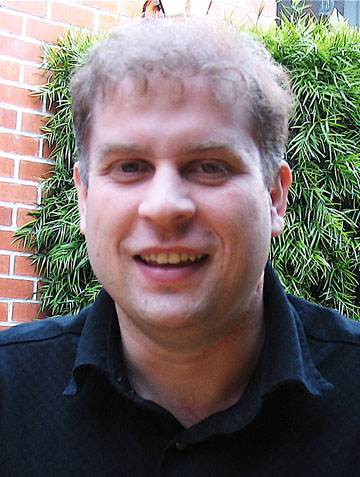
David Badre After completing a postdoctoral fellowship at the Helen Wills Neuroscience Institute at the University of California–Berkeley, David Badre switches coasts to join Brown as an assistant professor in cognitive and linguistic sciences and psychology. His focus is on the cognitive and neural mechanisms of executive function and cognitive control. He uses functional magnetic resonance imaging to study executive function in healthy people and in neurological patients who are driven by habit or spurred by environmental stimuli as opposed to what is appropriate. Most commonly, this phenomenon occurs in people with prefrontal cortex damage due to neurological disease and stroke. “It’s a loss of executive functions, the sort of top-down system that controls our actions.” says Badre. “These people have a high intelligence, but they can’t plan their day, budget their time or their money.” Badre received his Bachelor of Science from the University of Michigan, then was awarded a Ph.D. in cognitive neuroscience with a minor in computational neuroscience at M.I.T. From there, he went west to Stanford as a visiting scholar in the department of psychology, and then to Berkeley. He has won a National Research Service Award from the NIH, an NIH institutional predoctoral fellowship in visual cognition, and National Defense Science and Engineering Fellowship. Badre tries to understand what it is that allows us to connect our knowledge and goals to how we behave. What surprises him continually about his work? “It is always fascinating to discover powerful our brains are.” – Molly de Ramel 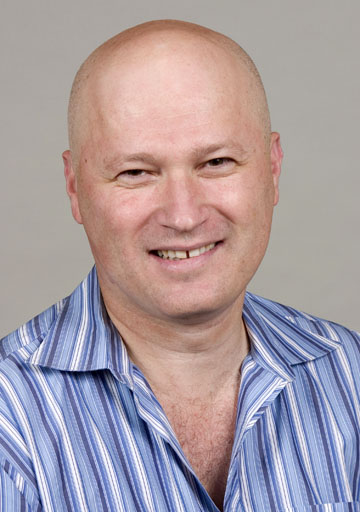
Gilad Barnea In brain science, much is known about individual brain cells – how they are built, how they work. And thanks in large part to technical advances such as functional magnetic resonance imaging, more is known about entire brain regions – big chunks of the brain that are active when we see, feel, move, learn and remember. Much less is known, however, about the scale in between. What about neuronal networks, the tens of thousands of brain cells that are connected to perform a particular function? This is the question Gilad Barnea pursues in his lab. “In neuroscience, our understanding of the middle level of the system is lacking,” Barnea said. “And this middle level is critical to our understanding of how the brain works. With better understanding of neuronal circuits, we will learn so much about perception, cognition, behavior – every function of the brain.” The brain is mind-bogglingly complex, with a hundred billion neurons connected by trillions of structures called synapses. One reason why brain circuits are a mystery is that unlike single brain cells, which can be tagged with glowing proteins, or unlike entire brain regions, whose activity can be measured by blood flow, neuronal networks can’t be marked for study. At least, not yet. Barnea, an assistant professor in the Department of Neuroscience, is studying the olfactory system in the mouse. His main goal is to understand how the brain knows what the nose smells. As a molecular biologist, Barnea decided to develop a method to specifically label neuronal circuits that process olfactory information. “The main challenge is to bridge the synapse, or the gap between cells,” he said. Barnea’s innovative system is inspired by the way nature solves this problem. When neurons “talk” to each other, one cell sends a chemical message across the synapse to the receiving cell, which then responds to the signal and passes the message on. Barnea has spent years engineering a technique that labels the receiving cells. Tests of the system in flies are encouraging. Now Barnea is developing it in mice. “If I get this labeling system running, then I feel I would’ve made my contribution,” he said. “The system is modular, so it can be easily adapted to study other circuits in the brain. If this succeeds, it would open a whole new field of neuroscience research. We would gain a much deeper understanding of how the brain functions.” Barnea comes to Brown from Columbia University, where he served as an associate research scientist in the lab of Nobel laureate Richard Axel. Barnea earned his doctorate in pharmacology from New York University, where he worked with renowned molecular biologist Joseph Schlessinger, and earned his bachelor’s degree in biology from the Hebrew University of Jerusalem. This spring, he will teach a graduate course in molecular neuroscience. “I’m glad to be here,” he said. “Brown is small place with a lot of good people.” – Wendy Y. Lawton 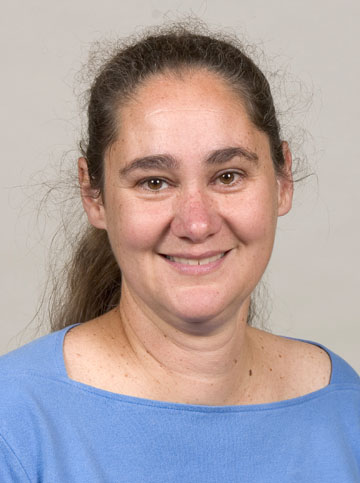
Judith Bender Most of the time, when people think about manipulating genes, they think about the benefits of turning them on. Judith Bender thinks about exactly the opposite. She wants to understand a process called “gene silencing.” Gene silencing is critical for normal development in animals and plants. It also functions to block the proliferation of invasive DNA species such as viruses in animal and plant genomes. When silencing goes awry, however, it can contribute to diseases including human cancers. Bender explains that the progression of cancer involves the inactivation of multiple genes that control cell divisions, and that this inactivation is frequently due to aberrant gene silencing. Gene silencing is also an important issue in making genetically modified organisms. Oftentimes, when new DNA with a beneficial property is introduced into the genome of the organism, it is perceived as an invader and switched off, defeating the purpose of the modification strategy. “Ten years ago,” Bender says, “it was a new field that was considered flaky, weird and mysterious. How could we ever have a molecular understanding of this? All that has changed.” Bender uses genetic approaches with a laboratory plant, Arabidopsis, to understand fundamentals of the gene silencing machinery. As a confessed puzzle addict, she is fascinated by the twists and turns of the silencing field. Bender arrives at Brown from Johns Hopkins University as a professor in the Department of Molecular Biology, Cell Biology, and Biochemistry. She got her Bachelor of Science (Phi Beta Kappa) and Ph.D. at Harvard, did her postdoctoral training in the laboratory of Gerald Fink at the Whitehead Institute for Biomedical Research, and received the prestigious Searle Scholars Award as a starting faculty member at Johns Hopkins for her work on gene silencing. She is currently a member of the North American Arabidopsis Steering Committee and of the molecular genetics grant review panel for the National Institutes of Health. – Molly de Ramel 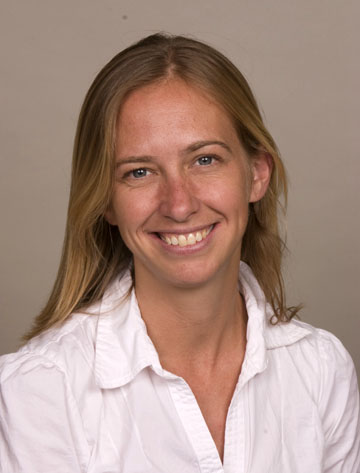
Erika J. Edwards Erika Edwards wants all of her students to be “tree thinkers” when they complete her class. Edwards, an assistant professor of ecology and evolutionary biology, is also a plant systematist, and she will be teaching and researching molecular phylogenetics. “Molecular phylogenetics are the tools we use to figure out how different species are related to each other,” she says. “We are, in a sense, building the evolutionary tree of life. I use phylogenetic trees to study character evolution and how different traits of organisms evolve over time.” Edwards’ career path started in ecology and conservation biology as an undergraduate at Stanford University. She received her Ph.D. at Yale University in 2005 and was surprised at the results of her thesis. “I studied the Pereskia cacti, which are present-day representatives of the earliest diverging lineages,” she says. “They don’t look anything like cacti – they are woody plants that have leaves, and they grow as trees and shrubs. I was specifically working on their phylogenetics as well as the physiology and ecology of these species, and when I put it all together, I came up with their water use strategy and what their ecology was. They ended up behaving more like a cactus than a leafy plant. They were oddballs in an ecophysiological sense. It was a huge surprise, but surprises like this happen all the time in my research.” Edwards plans to continue working with the leafy cacti and their relatives. She’s also focused on leaf evolution. “Leaves vary in shape and size, and we know very little about how they change through time within their lineage and how these different traits evolve in response ecological factors,” she says. “So I’ll be working on a separate group of plants, not cacti, and following evolutionary changes in leaf shape and looking for ecological function.” When students sign up for Edwards’ class, they will become tree thinkers. “I want my students to gain not just a basic knowledge of plant evolution, but a shift in their whole perspective. Look at any organism on the Earth through the view of phylogenetics, and it will change the way you see the world in a positive way.” Although she will be on sabbatical for the coming year, Edwards welcomes all undergraduate students to her molecular phylogenetics lab on the 4th floor of the BioMed building. – Amy Morton 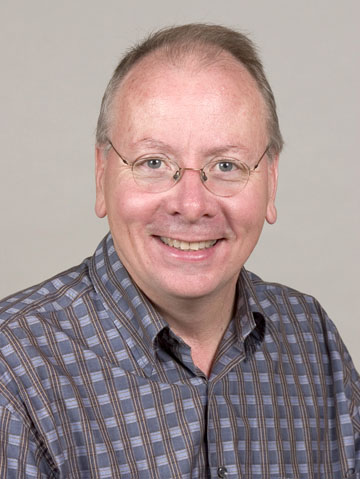
Karl T. Kelsey What puts some people at greater risk for getting cancers caused by toxins such as arsenic, asbestos or tobacco smoke? Once these high-risk people are exposed to toxins, what happens inside their cells? Karl Kelsey, M.D., a new professor of community health, brings a unique set of skills to these questions. Kelsey is a molecular biologist who studies substances in blood or tissue that signal that cancer is present or progressing. Kelsey has identified several of these disease-flagging features, known as biomarkers, for breast, lung and other cancers. But Kelsey doesn’t stop in the lab. He takes the knowledge gained there and applies it to people, overseeing large studies that compare people with cancer to a very similar group of people without cancer. Then Kelsey and colleagues study the medical and lifestyle histories of people in each group to learn what factors may have caused them to get sick. His work has led to critical and sometimes surprising findings, such as the role human papilloma virus has in increasing risk for head and neck cancers. Kelsey also studies how toxic substances behave in the body, influencing gene activity and forming tumors in ways that differ from tumors created by genetic defects. For example, on the cellular level, the lung cancer tumor of a smoker looks different from the lung cancer tumor of a nonsmoker. “I like taking basic biology tools and knowledge and applying them to people,” he said. “This combination of science and medicine suits me.” Kelsey’s love of both bench science and medicine stretches back 30 years. He started out studying physics, earning his bachelor’s degree from the University of Minnesota, then went on to earn his medical degree. Then Kelsey attended Harvard University, earning a degree in occupational medicine. Kelsey never left Cambridge; for the last 20 years, he has taught and conducted research as a professor of cancer biology and public health at the Harvard School of Public Health. Vincent Mor, chairman of the Department of Community Health, said Kelsey is a critical hire. Bringing in a nationally recognized environmental health leader, Mor said, is a must if Brown wants to create a full-fledged School of Public Health. At Brown, Kelsey will also play a pivotal role as director of the new Center for Environmental Health and Technology and will help advance campus-wide environmental health research in collaboration with the Department of Pathology and Laboratory Medicine, the Center for Environmental Studies, the Division of Engineering, and Brown’s affiliated hospitals. “We’ve got a very strong leader in Karl,” Mor said. “He is well-known for his work in molecular epidemiology and brings a strong research portfolio. He is also a wonderful guy. We did well.” – Wendy Y. Lawton 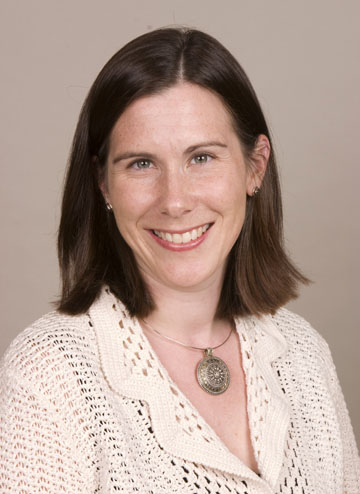
Heather Leslie Heather Leslie has long stood in the space where science and policy meet. Leslie landed at this intersection long ago, back in her hometown of Plymouth, Mass. The town has nine public beaches and, as a high school student, Leslie served as the youngest advisor to town leaders on how to best protect those stretches of sand. Later, as an Audubon Society intern, she spent two summers combing the beaches of Plymouth and neighboring towns with a clipboard, counting the number of chicks born to endangered terns and plovers. Through this on-the-ground experience, Leslie saw that the town wasn’t taking a proactive approach to implementing the state wetlands conservation law – a law designed, in part, to protect the birds. So Leslie wrote a report to Plymouth leaders suggesting areas for improvement. Town leaders were displeased – and even dragged Leslie back from college at Harvard to upbraid her for the assessment. Leslie, the Sharpe Assistant Professor of Environmental Studies and Biology, laughs at the memory. But the experience was instructive: “I learned early on that conservation isn’t so much about managing resources as it is about managing people.” This idea has profoundly shaped Leslie’s views on science. Studying how humans interact with nature, she believes, is a critical component of conservation. That is why, she believes, social scientists and natural scientists should work together to manage and protect the environment. In fact, Leslie calls herself a “marine conservation scientist” – not a “marine conservation biologist” – to reflect her affinity for interdisciplinary approaches. “To protect the land, you have to change human behavior,” she said. “And to change human behavior, you have to understand it. And that’s exactly what anthropologists, economists and sociologists attempt to do. It makes a lot of sense to meld investigations of ecosystems with those of human systems.” This belief is one reason why Leslie makes a good fit for the Center for Environmental Studies, where she holds an academic appointment. The center is home not only to ecologists and biologists and geologists but also sociologists and other social scientists. Leslie, who earned her Ph.D. in zoology at Oregon State University and then served as a research associate at Princeton, also holds an appointment in the Department of Ecology and Evolutionary Biology. This fall, Leslie teaches a marine conservation science and policy course, and she will pursue her research interests: coastal ecology, assessing marine management strategies, and linking the natural and social sciences to better understand the relationships between coastal ecosystems and the people who use them. In fact, Leslie is wrapping up edits on a book about ocean management, due out next year, that includes contributions from biologists, economists and policy analysts. “Brown is a place where you can work across disciplines,” she said, “which is one of the many reasons why I am excited to be here.” – Wendy Y. Lawton 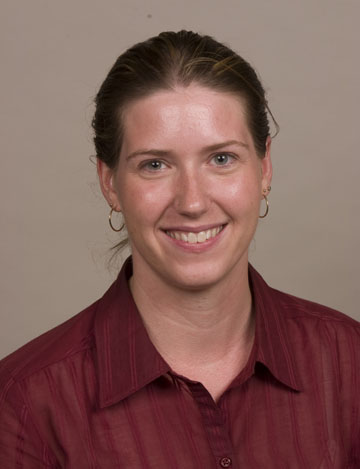
Crystal Linkletter Canadian Crystal Linkletter comes to Brown as an “S4 Person” – Spatial Structures in the Social Sciences. She’s interested in a wide range of mind-bending statistics: geographical, social, spatial, and structural. “The idea is that you’re working with data that has structure associated with it,” she says. “You’re not only looking at the outcomes themselves, but also how the outcomes are correlated with each other. ... Statistics is about learning from data.” In completion of her Ph.D., she worked at Los Alamos studying “contact networks” and how they impact the spread of diseases (all the more relevant in an age of biological warfare and fears of a superflu.) A key aspect of the work was developing statistical methods to help predict who might know whom in a neighborhood. “There are many kinds of network relations,” she says, “from proteins to corporations.” Her research interests today broadly include social network modeling, Bayesian hierarchical modeling, design and analysis of computer experiments, and industrial statistics. Amidst all of her work, she definitely has a sense of humor about all the numbers flying around: One of her invited presentations was titled “From computer experiments to social networks: fun with spatial process models.” Linkletter earned her Bachelor of Science in mathematics and statistics at Acadia University in Wolfville, Nova Scotia, and her master’s and Ph.D. in statistics at Simon Fraser University in Burnaby, British Columbia. In addition to her time at Los Alamos, she’s already served as a research assistant with funding from the Canadian Foundation for Innovation, the Pacific Institute for Mathematical Studies, and the Natural Sciences and Engineering Research Council of Canada. Her paper, “Variable selection for Gaussian process models in computer experiments,” published in Technometrics, was recently selected for the Jack Youden Prize by the Chemical and Process Industries Division of the American Society for Quality. – Molly de Ramel 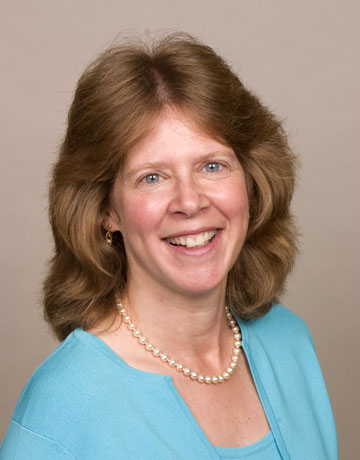
Bess H. Marcus To say Bess Marcus is a new hire is technically true – but deceptive. Marcus has been at Brown for 19 years, teaching and conducting research in the Department of Psychiatry and Human Behavior. It is there, and as director of the Centers for Behavioral and Preventive Medicine at The Miriam Hospital, a nationally known public health research center, that Marcus built her reputation. It is considerable. A clinical health psychologist, Marcus is Brown’s foremost expert on physical activity and health and is known internationally as a leader in the field, making key contributions to our understanding of how to persuade people to take up – and keep up – exercise. Marcus has sat on the editorial boards of seven peer-reviewed journals, led research on 17 major National Institute of Health grants, and published 130 peer-reviewed research papers. She has helped the American Heart Association, Centers for Disease Control and Prevention and the National Institutes of Health create new recommendations on how much exercise is needed to reap health benefits. Marcus’ work focuses on how to best get people moving – walking, swimming, biking, whatever – and stay moving to stave off obesity, heart disease, cancer. After investigating scores of interventions aimed at promoting exercise through face-to-face and telephone counseling, mail-based print materials, and the Internet, Marcus has learned that exercise is as powerful as a prescription drug when it comes to boosting health and mood. “You feel strong, you think clearly, you have energy, you sleep better,” Marcus said. “But many people still don’t stick with an exercise routine.” Why? Typical barriers, Marcus said, like a lack of time or money. So Marcus has developed easy, low-cost ways to promote exercise, such as Internet chat groups, doctor’s office counseling sessions, and community walking groups. Over the course of her career, Marcus has learned some secrets of success. “People who make exercise a habit connect with other people to exercise with and they do an activity they enjoy,” she said. “They also don’t make it an all or nothing proposition. On days they can’t take a 30-minute walk, they figure out how to fit in three 10-minute walks. The success stories reflect a flexible yet consistent approach to making exercise a regular part of the daily routine.” Marcus is signing on to Brown full-time as a professor of community health. She was a critical hire; Brown is working to transform its Program in Public Health into a School of Public Health, a distinction that requires three full-time, tenured professors who focus on behavioral and social sciences. Marcus is the third. Working with graduate students, she said, was a major draw. “I’ve mentored about 30 interns, fellows and junior faculty in my career and it’s what I love,” she said. “If you want to have an impact, that is the way to do it.” – Wendy Y. Lawton 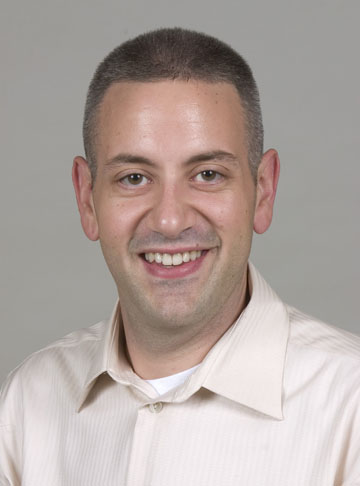
Carmen Marsit Scientists have long known that mutated genes cause cancer. Increasingly, however, scientists like Carmen Marsit are studying the effects of altered genes and how they contribute to cancer. These scientists are interested in subtle biochemical changes that effect gene activity – increasing or decreasing gene activity or shutting genes on or off altogether. These genetic alterations may be triggered by environmental factors such as stress or smoke, poisoned water or chemical spills. Marsit, an assistant professor in the Department of Pathology and Laboratory Medicine, said this new area of study – dubbed epigenetics – makes sense. “Genetic mutations don’t explain all cancers,” he said. “For example, arsenic doesn’t mutate cells. But arsenic can contribute to skin and bladder cancer. How that happens is what interests me.” Marsit said one subtle chemical change that effects how genes behave is DNA methylation, a type of chemical modification of DNA. One of the effects of methylation is the silencing, or switching off, of certain genes. Some are tumor suppressors, so methylation can be a powerful predictor of cancer. Studying the methylation process could lead to the development of new drugs that can switch the tumor suppressing genes back on. “This work would lead to better ways to treat and diagnose cancer,” Marsit said. “We may not be able to prevent cancer with our research data, but we could use it to eventually slow the progression of the disease.” Marsit became interested in environmental health while growing up in rural Pennsylvania. There was a beryillium plant near his town which processed the metal during World War II to help build planes and bombs. Many people who worked in the plant went on to get lung disease. While at Lafayette College, Marsit wrote a report on the plant – and was hooked. He went on to earn his bachelor’s degree in biochemisty with high honors then earned earn his doctorate in biological sciences in public health from Harvard University, where he has worked as a postdoctoral research fellow for the last three years. Marsit looks forward to collaborating with Karl Kelsey, his mentor at Harvard who now works at Brown. Marsit also looks forward to working with clinical pathologists at Brown’s affiliated hospital so that he can better understand how tumors are made. And Marsit is interested in collaborating with researchers at Women & Infants Hospital so that he can better undertand how subtle alterations in gene activity may occur during development. “Epigenetics,” he said, “ really is a new paragdigm.” – Wendy Y. Lawton 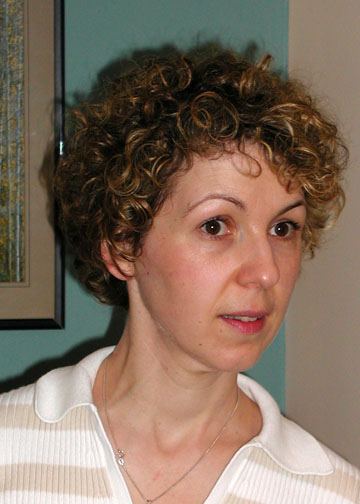
Elena Oancea Near the end of her Ph.D. studies, Elena Oancea peered into her microscope at the florescent tags she had attached to C2 domains and put into a few cells. “It looked like the cells were blinking,” she said. “It was so beautiful, absolutely fascinating.” Years later, Oancea is still mystified and intrigued by cell biology, specifically signal transduction – the way cells perceive and understand what is going on around them. She wonders how cells sense fluid flow. “How do cells know there is blood flowing on them?” she wonders. “When there is an injury in a blood vessel, how do cells know to repair it?” Experts in the field would know that she studies TrpM7 ion channels using TIRF and confocal fluorescense imaging of live cells, molecular biology and biochemistry. Growing up in Romania, Oancea found her first role model in her mother, a high school physics teacher. Indeed, her first degree at the University of Bucharest was in physics. She also taught briefly – high school science in the industrial town Galati. Then, however, she went on to earn an M.S. in biophysics and left for Duke University’s Department of Cell Biology to earn her Ph.D., and from there to a postdoctoral fellowhip in the laboratory of Dr. David Clapham at Harvard Medical School’s Department of Cardiology at Children’s Hospital. Most recently Oancea was an instructor in the Department of Cardiovascular Research, also at Harvard’s Children’s Hospital. – Molly de Ramel 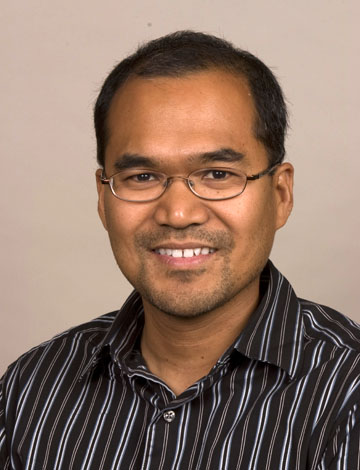
Hernando Ombao Hernando Ombao is joining the Community Health (Biostatistics) and its Center for Statistical Sciences as an associate professor. He is well known nationally and internationally as an expert in statistical methods for the analysis of multivariate, non-stationary time series data. His theoretical work is strongly motivated by research problems arising in his extensive interdisciplinary work in the neurosciences. Ombao’s path to his new appointment at Brown has covered a lot of territory, not all of it geographical. He grew up on the small island of Panay in the Philippines and remembers being astonished by the concept of frozen food when he first arrived in the United States. Hernando holds a Ph.D. in biostatistics from the University of Michigan, an M.S. in statistics from the University of California–Davis, and a B.S. in mathematics from the University of the Philippines. Prior to joining Brown, he was on the faculty at the University of Illinois. He currently serves as an associate editor at the Journal of the American Statistical Association. Ombao continues to be fascinated by biological signals. He thinks a lot about thinking – what it is that we do when we think, perceive and distinguish. He searches for patterns in brain signals with signatures that differentiate healthy controls from patients. As he delves into discovering how different patients respond to different kinds of stimuli, he confronts the big challenge in statistics: natural variability among individual humans. We all process information in different ways. One aspect of his research is to determine whether an apparent pattern is as pattern at all or simply a random event. At Brown, Ombao will continue to develop his methodological work. He hopes to build collaborations with scientists from different fields who study brain signals. – Molly de Ramel 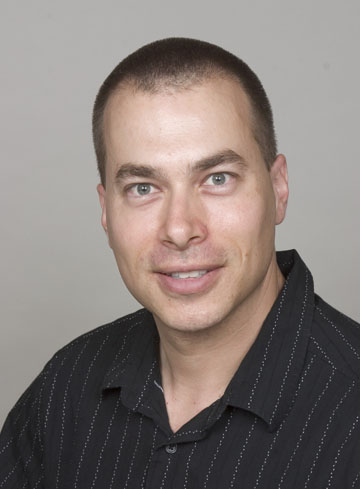
Dov F. Sax Dov Sax thinks a lot about alien invasion and assisted migration, wondering how non-native species and climate change impact native biodiversity. “The whole concept of what native is changes when you start changing climate,” he says. “We have to evaluate, and ask, do we change policy?” What does he mean? Say the climate in Southern California is changing and a toad born and bred in Los Angeles would be better off in the cooler climes of San Francisco. For the toad, the options are few: Evolve fast or become extinct. Or, should humans assist in the relocation? What impact does that have on the toads already living in the Bay Area – and do they have to be moved as well? Can we use these theories to help stop extinctions in the wake of global climate change? To help answer these questions, Sax takes a macroecological view, looking at data sets. He’s examined 40 different distinct island groups, stepped back, and looked at the overall patterns of extinction. Sax asks, “How long does the process of extinction take? ... You can’t predict what any one gas molecule is going to do, but you can predict what the whole set is going to do. There’s a lot of value in looking at systems or sets of species. I might look at hundreds of species at once.” Sax arrives at Brown from the University of Georgia’s Institute of Ecology. He did his postdoctoral work at the University of California–Santa Barbara and was awarded his Ph.D. at the University of New Mexico. The biologist is the co-founder of the International Biogeography Society, serving now asa member of its governing board. He has written two books, and six book chapters, most starting with the title “Species Invasions,” and he’s had some surprises along the way. Sax joins Brown as an assistant professor in the Department of Ecology and Evolutionary Biology, with a joint appointment in the Center for Environmental Studies. – Molly de Ramel ###### | |||